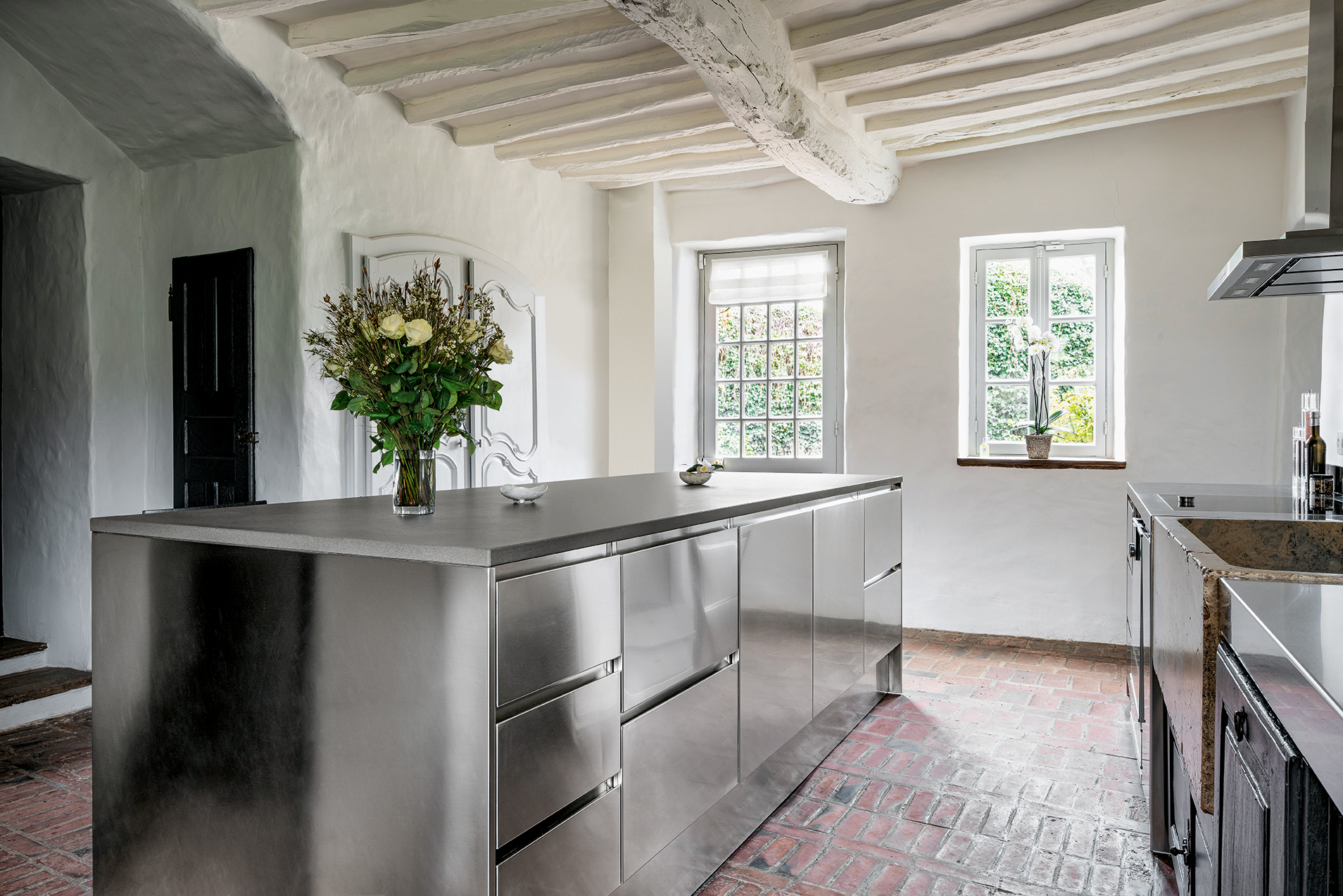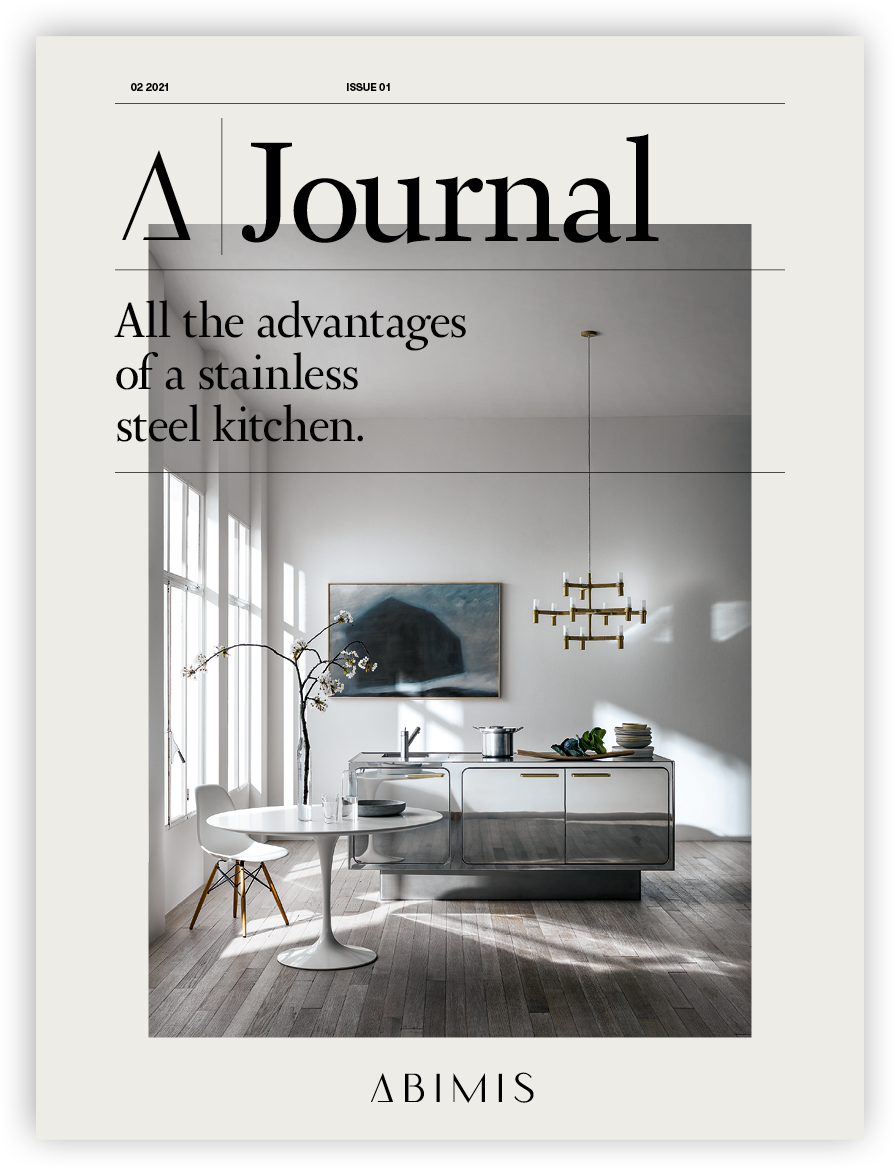
Minimal kitchens: choosing elegance and functionality
Minimal kitchens are one of the latest trends in contemporary design
Minimal kitchens: the stars of today’s interior design scene. Over the last year, this trend has really gathered speed, as confirmed by the 2020 trends report by Pinterest (the well-known image-based social media network), where searches for “minimalist modern kitchen” increased by 115%.
So, we’re seeing a return to minimalism both in the kitchen and in the rest of the home. The minimalist style is an extremely popular solution for every room of the house, and not only for its aesthetics. At a complicated and historic moment in time such as this one, we’re feeling a growing need to slow down and simplify. We want our homes to give us that sense of order and calm that we cannot find in the outside world.
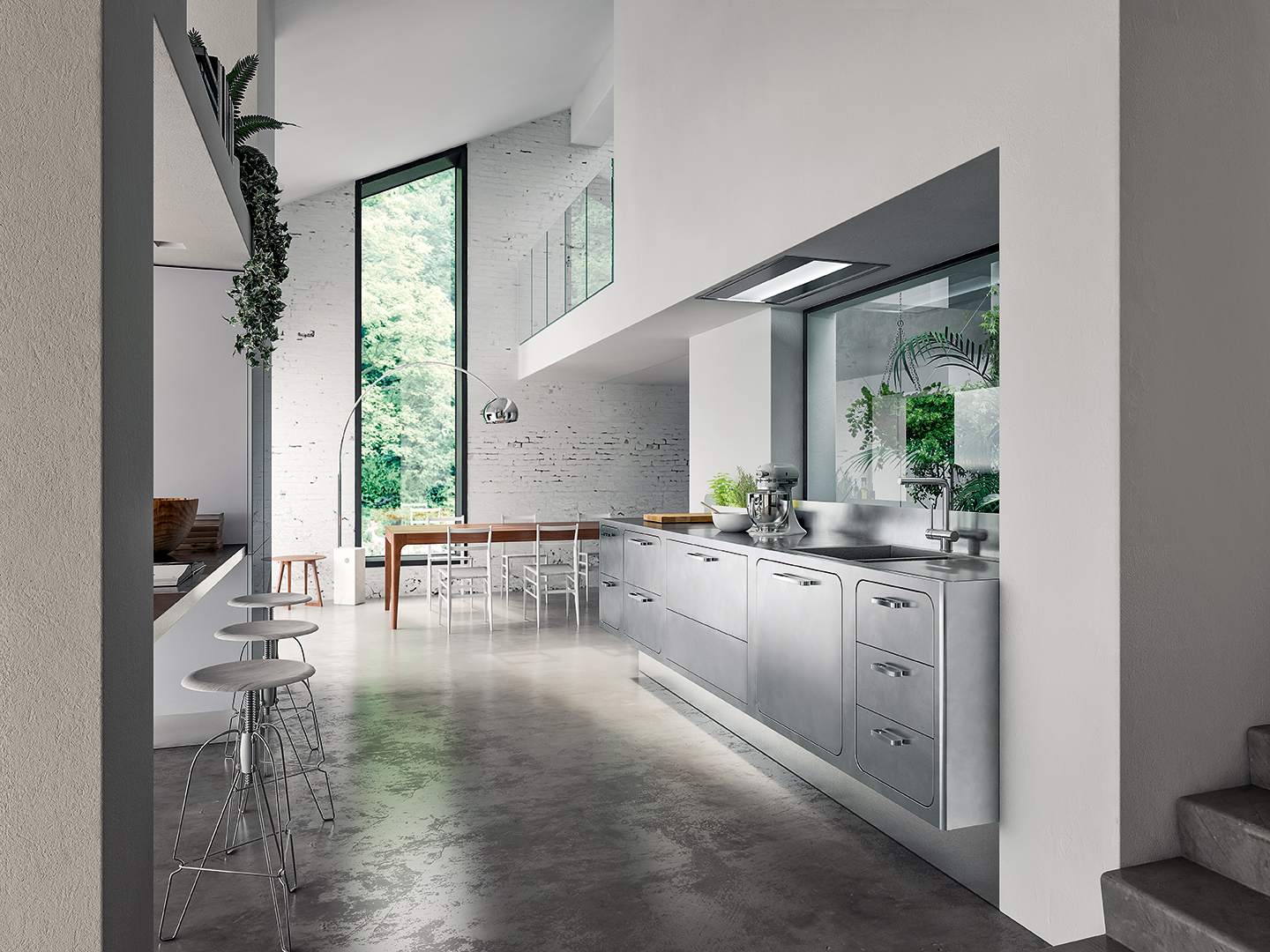
When did minimalism begin?
Less, but better. (Weniger, aber besser in the original version). This was the design philosophy followed by German designer Dieter Rams and how he explained minimalism, before this word entered into common usage. Dieter Rams believed that good design means as little design as possible. “Less, but better – because it concentrates on the essential aspects, and the products are not burdened with non-essentials. Back to purity, back to simplicity”.
This essential design approach was first reflected in the furniture designed in the 1920s, during the Bauhaus era. This was then theorised by the very famous “Less is more” by German architect Mies Van Der Rohe. However, it wasn’t until the 1960s that the term ‘minimalism’ was born, along with the artistic movement of the same name that arose in New York, with the works of Robert Morris, Sol LeWitt and Frank Stella. The minimal style went on to make a name for itself in the world of design in the 1990s, with the works of Naoto Fukasawa, Tadao Ando, Jasper Morrison and Maarten van Severen, to name but a few.

What characterises a minimal kitchen?
A simple design, neutral colours, quality materials, attention to detail, maximum functionality. These are the characteristics that define minimal kitchens. As mentioned above, minimalism in the kitchen focuses only on the essential elements, which are then designed in the best way possible.
Versatile and elegant, minimal kitchens are the ideal choice for open spaces, creating continuity with the living area. In fact, their essential design blends in perfectly with the lounge, giving interiors a sense of lightness.
Let’s take a look at the characteristics of minimal kitchens in more detail, and the reasons to choose them.

Minimal kitchens have a simple and essential design
As we said, minimal kitchens are characterised by their simple, neat designs. Their doors tend to be smooth and uniform, preferably with invisible handles: recessed or with grooves. Sinks and burners are integrated into the worktop, making them less “visible”. Kitchens become one-piece sculptures, allowing them to better adapt to the style of the surrounding furnishings.
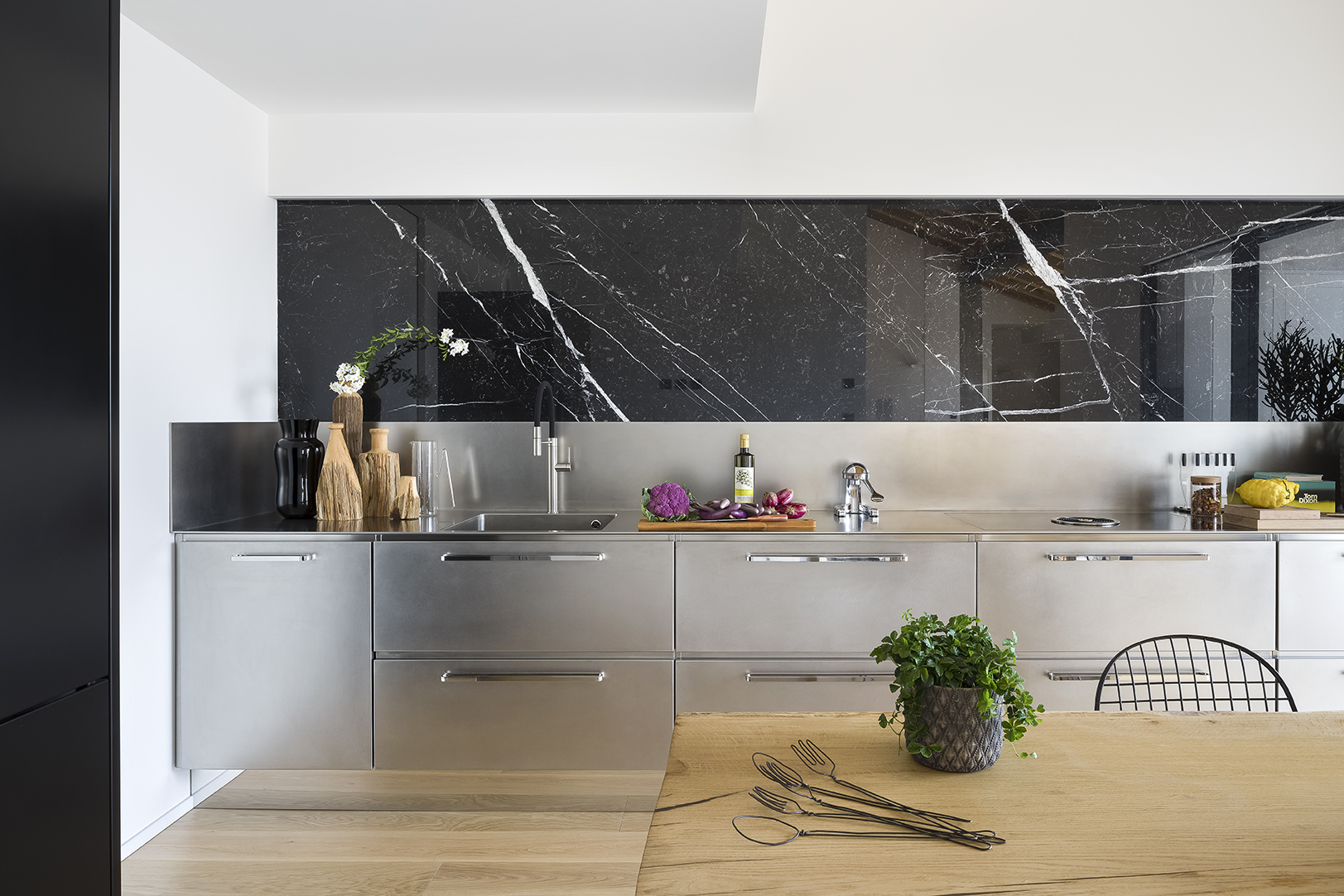
Appliances are hidden behind doors or in specially designed units. All designed to become almost invisible, blending in with the living area.
A total look that excellently interprets contemporary living requirements, offering increasingly flexible distinctions between rooms.

Minimal kitchens are all about materials
Minimal does not mean cold and anonymous. In a kitchen with a simple design, materials play the leading role. Tactile, resistant and high-performance materials, for kitchens with a timeless design.
Stainless steel is a perfect example, the material of choice for industrial-style kitchens, which also reject any additional decorations in true minimalist style.
Stainless steel is a smooth and reflective metal alloy with a strong and decisive look, ideal for adding character to a kitchen with minimalist aesthetics. Stainless steel is also extremely resistant to knocks and bumps and to high temperatures. It is therefore the perfect choice for anyone looking for a kitchen that can stand the test of time.

Minimal kitchens prefer neutral colours
White, grey, black, delicate pastel shades; or a stainless-steel colour. Kitchens with a minimal style are characterised by their neutral colours. The aim is to make the kitchen as light and airy as possible, visibly magnifying the spaces. This is important for many modern homes that often have open-plan or small kitchens. At a time when the home has become the centre for all our activities, kitchens are becoming minimal, tending to disappear from view in order to make the living area appear larger.
To further boost the perception of space, minimal kitchens are often designed as open-plan solutions in stainless steel, or with glossy finishes. These two options reflect the light, brightening up the surroundings.
Minimal kitchens are easy to clean
Last but not least, minimal kitchens are easier to clean and sanitise. This is a key feature in any kitchen and has become even more important during the current pandemic. In fact, the simple design and complete lack of any gaps in minimal kitchens prevent dirt and bacteria from building up, thereby guaranteeing the utmost levels of hygiene and cleanliness in the kitchen.
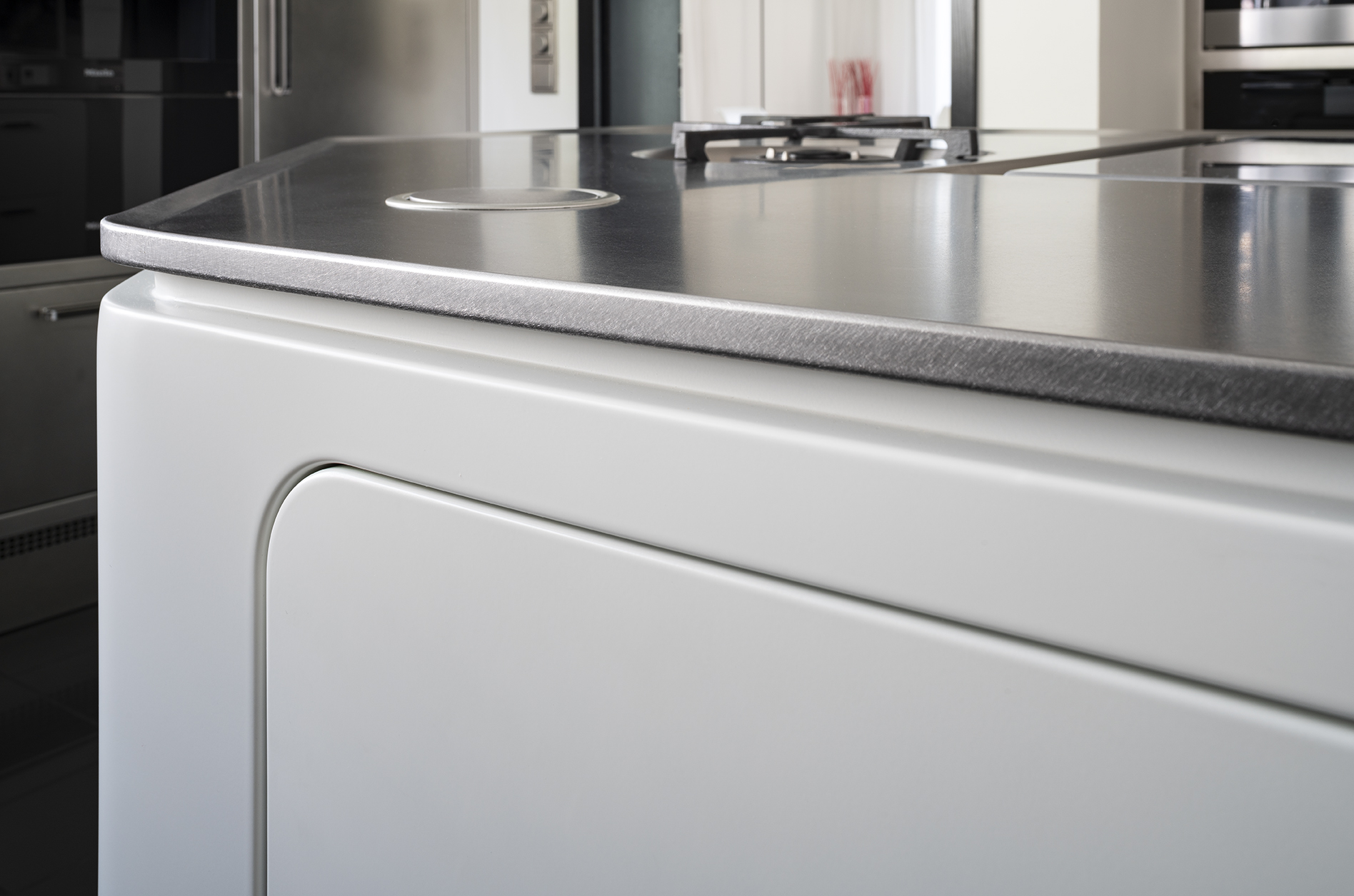
Abimis kitchens
Abimis professional kitchens for the home are the perfect choice for fans of minimal kitchens.
In particular, kitchens from the Atelier range are characterised by their meticulous and simple design. The angular doors are available without handles; the worktops are smooth and joint-free.
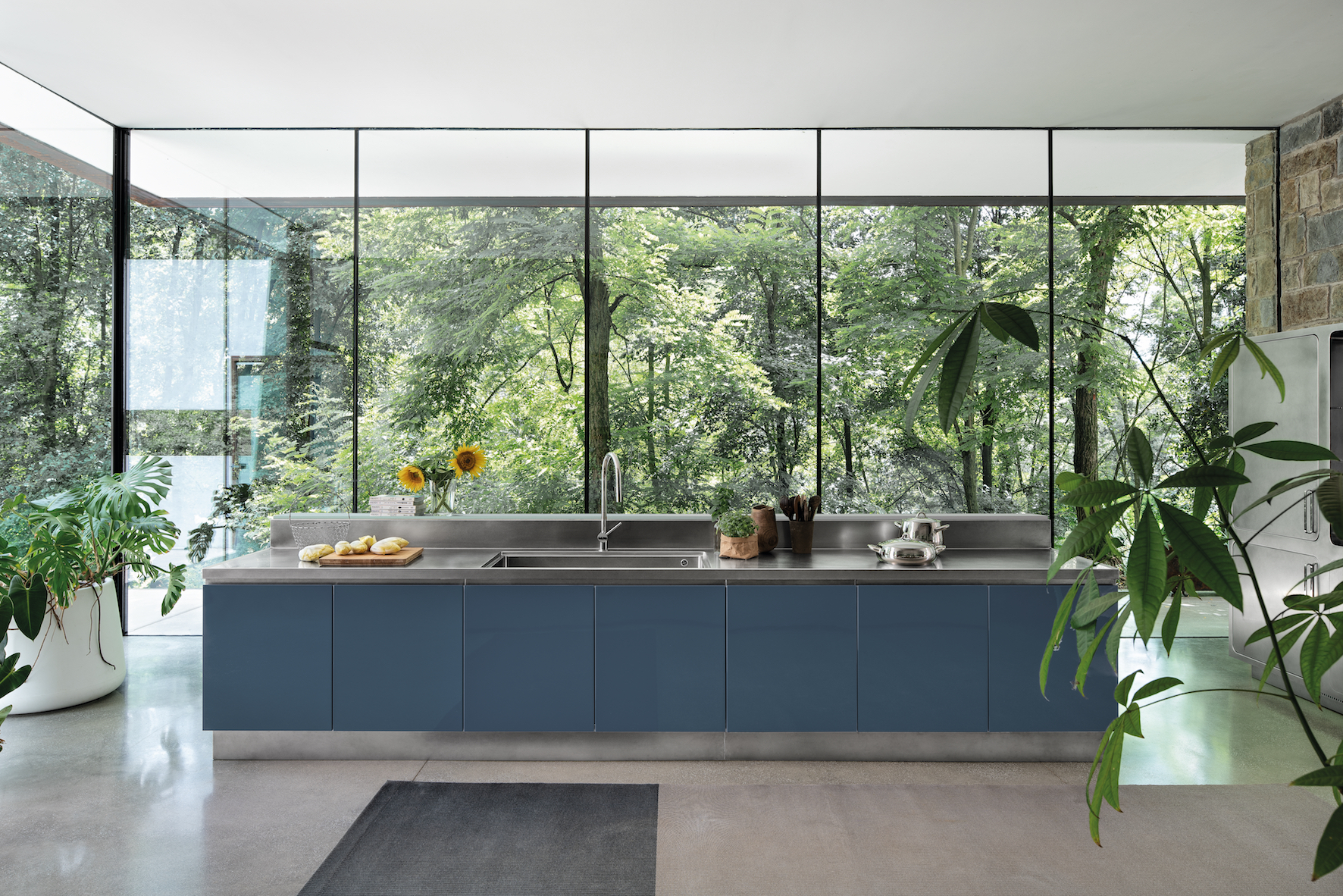
Abimis uses AISI 304 stainless steel for all of its kitchens, an antibacterial metal alloy that is easy to clean and is extremely resistant to knocks and bumps, abrasions and high temperatures. Abimis’ Atelier kitchens are also completely customisable in terms of their materials and finishes. In fact, the stainless steel can be painted in a range of colours, or combined with other natural materials, such as wood, stone and marble, or even acrylic stone such as Corian and HI-MACS.
